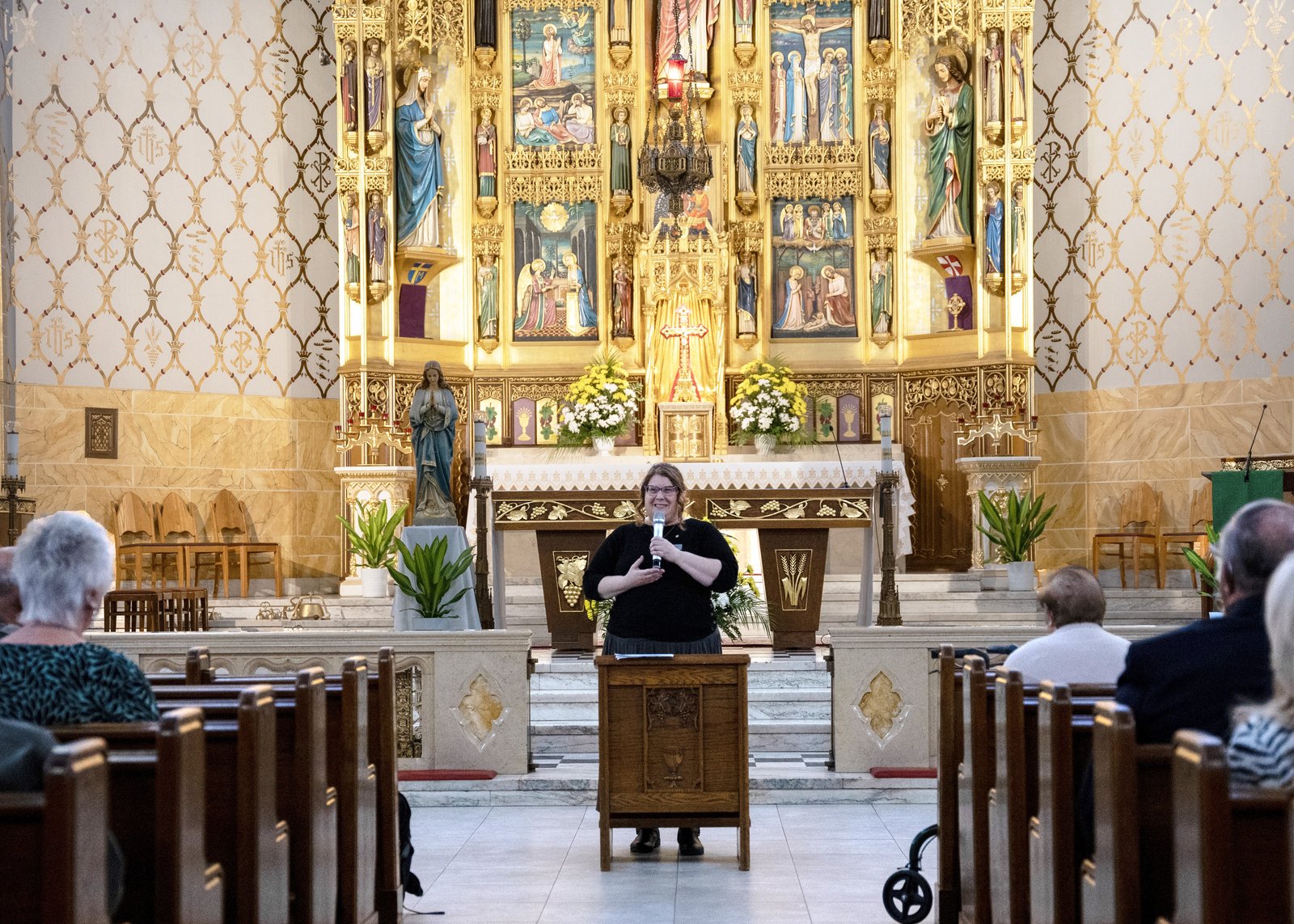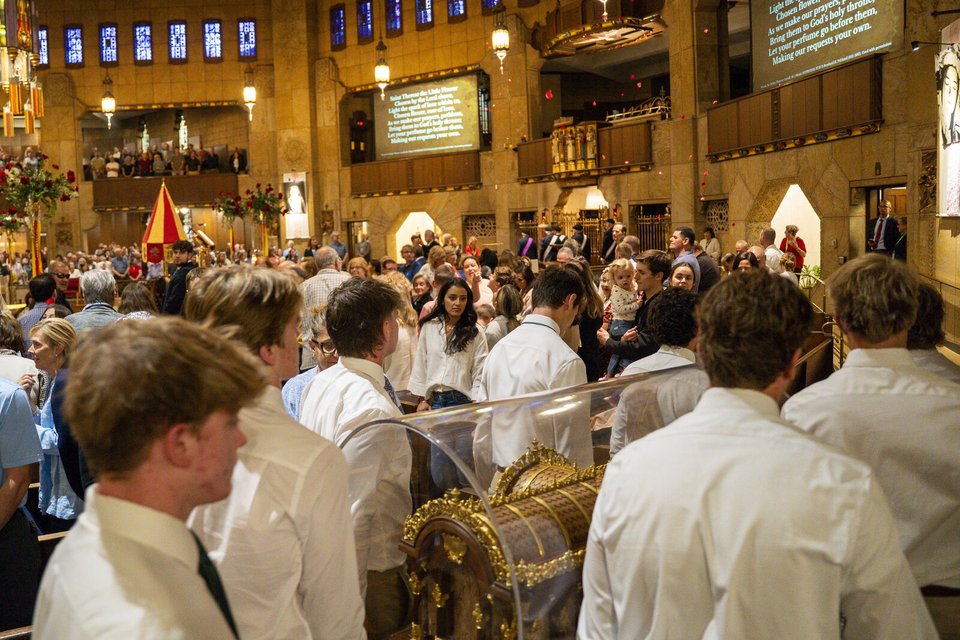Ahead of St. John Paul II's feast day, event at historic Polish church draws attention to beauty, purpose of sacred architecture
HAMTRAMCK — In the days leading up to the feast of the beloved Polish pontiff, St. John Paul II, Detroit-area faithful were invited to attend a celebration of the saint and to grow in deeper appreciation for Hamtramck's grand historically Polish church, St. Florian.
The Oct. 19 gathering, hosted by the Archdiocese of Detroit’s Office of Sacred Worship, began with a social hour complete with Polish treats and pastries, followed by talks given by Sr. Esther Mary Nickel, RSM, director of sacred worship, and Kathy Fech, sacred worship coordinator. The day ended with exposition of the Blessed Sacrament and Mass celebrated in both Polish and English.
Sr. Nickel reflected on her memories of St. John Paul II, who visited and celebrated Mass at St. Florian in 1969 when he was Karol Wojtyla, archbishop of Krakow. Fech shared the history of the building and invited attendees to spend time exploring the beautiful artifacts and artwork in the church.
“See where your eyes are drawn and what you are curious about, because that’s Christ's invitation to you today,” Fech said. “Christ is going to speak to each of us uniquely. Walk around freely, so we have a chance to really look and spend some time with the art and architecture that you are most drawn to.”


While the parish was first founded in 1907 by Polish immigrants attracted to the area by the promise of jobs in the booming automobile industry, Fech explained that the current structure was not built until the late 1920s and was dedicated on Monday, Oct. 21, 1928.
On the day of its dedication, Fech said 3,000 people were in the pews and approximately 2,000 gathered in the streets outside.
“St. Florian stood for beauty, prayer, community and order at the very center of the world of ugliness, smoke, noise, profit and materialism," Fech said.
Fech and Sr. Nickel both acknowledged the Polish immigrants and parishioners who built the church so many years ago and made it possible for St. Florian to continue to serve as a place of worship in the 21st century.
“I want to briefly honor all of those faithful Catholics who, in the early decades of this parish, gave so much so that 96 years after this building was dedicated, we can be here today to fall deeper in love with the Lord,” Fech said. “Their names need to be known only to God … I want to honor the sacrifices that they made. We celebrate those who reach heaven and join the church triumphant in prayer for the souls of many still suffering in purgatory.

“Their faith was so deep that they wanted to ensure a long-lasting space to honor our Lord that would last generations,” Fech continued.
Fech added that millions have wandered into St. Florian over the last 96 years and have been drawn closer to the Lord as a result of the beautiful space and its purpose.
“I imagine the countless artisans and craftsmen who dedicated hundreds upon hundreds of hours,” Fech said. “Ninty-six years ago, the scaffolding was built 200 feet over our head, eight stories high. We think that’s dangerous now; how much more danger would they put their lives in 96 years ago so we could be here today and gaze heavenward?”
Fech pointed out the murals of the evangelists, as well as the countless stained-glass windows not only depicting Gospel stories but also depictions of saints beloved among Polish Catholics, such as Kashmir, Hedwig, Hyacinth, Stanislaus, and, of course, Florian.
Additionally, Fech reminded those gathered that while reading is a common skill now, for centuries, it was not, and the faithful learned the Bible and catechism through artwork.

“Churches were always designed so that everything in the building would catechize: the design, the artwork, aesthetics, and even the acoustics are here to aid our prayer life and teach us,” Fech said. “Before learning from a book, many learned the faith for centuries by studying stained glass, sacred art and sacred music, and we can still see all those elements present today, and they can still catechize us. They can still call us to prayer and call us closer to God just as much as they did when they were built.”
In pointing out the beautiful intricate altarpiece, Fech noted that the craftsmanship and care reflect the honor and respect afforded to the Eucharist.
“Looking at the art, these are mere shadows of the reality they draw us to, but they are no less worthy of looking because it will not be until heaven that we can see and experience the true reality,” Fech said. “So in the meantime, this space, the windows, the altar, the statues, let them be the shadows that point us in those directions.”
Copy Permalink
Sacred art Saints












